Seismic attributes and structural interpretation—it takes two to tango...
Guillaume Backé A B , Ernest Swierczek A B , Justin MacDonald A C , Adam Bailey A C , David Tassone A C , Hani Abul Khair A C , Simon Holford A C and Rosalind King CA Australian School of Petroleum
B CO2CRC
C The University of Adelaide
The APPEA Journal 52(1) 437-454 https://doi.org/10.1071/AJ11035
Published: 2012
Abstract
In this paper, different 3D seismic attributes calculated to improve the accuracy and robustness of structural interpretations in several energy-rich Australian basins are compared. Detailed and precise fault and fracture maps are crucial not only for initial petroleum play assessment, but also for fault seal analysis and reservoir integrity studies. Robust fault and fracture models are also needed to improve the design of reservoir simulation programs and to manage the long-term containment of gas in geological formations.
Different attributes (including coherency, dip-steered similarity, dip-steered median filter, dip-steered variance, apparent dip, and dip-steered most-positive and most-negative curvatures) from an array of 3D seismic datasets to better image structural fabrics, such as normal and different fractures patterns, in the North Perth, Cooper, Ceduna, Otway and Gippsland basins have been calculated.
The results provide a remarkable improvement in the quality and precision of structural maps using this multi-attribute mapping workflow by comparison with more conventional maps produced, solely using seismic amplitude data. The key to the successful application of multi-attribute structural analysis, however, remains with the ability of the interpreter to identify meaningful structural information from a large volume of data. Thus, the structural expertise of the interpreter remains as the cornerstone to making geological sense of the various seismic processing techniques available.
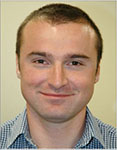
Guillaume Backé is a structural geologist with an expertise in seismic interpretation, three-dimensional structural and geomechanical modeling. He obtained a Master of Geophysics at the University of Toulouse III in France in June 2002, and completed a PhD at the University of Pau et des Pays de l’Adour in 2006. He very recently joined BP as a structural geologist in the Integrated Sub-surface and Description and Modelling team (ISDM), following a two-year Postdoctoral position in the Centre for Mineral Exploration Under Cover (CMXUC) and a three-year lecturing position at the Australian School of Petroleum of the University of Adelaide. Member: AAPG, PESA, AGU and EAGE. guillaume.backe@adelaide.edu.au |
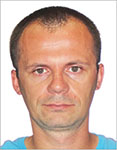
Ernest Swierczek is a PhD candidate at the Australian School of Petroleum (University of Adelaide). In 2006, he obtained his MSc (petroleum geology) from AGH University of Science and Technology, Cracow, Poland. During this time, he studied petroleum prospectivity of the Skole Nappe in the Polish Eastern Carpathian Foredeep Basin. He worked for a few years before he started his PhD as geoscientist at geophysical consulting company in Adelaide. His research interests are in 3D structural and geomechanical modelling, fault reactivation, and fault mechanics for carbon storage process. Member: AAPG, ASEG, AGU, EAGE, PESA. ernest.swierczek@adelaide.edu.au |
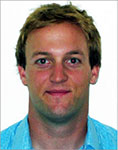
Justin MacDonald is a PhD student at the Australian School of Petroleum. He is a graduate of Memorial University of Newfoundland and the University of Waterloo, Canada; he holds a BSc (hons) and an MSc. His research interests relate to structural controls on delta—deepwater fold-thrust belts with particular emphasis on the Ceduna Delta systems of the Bight Basin. Member: AAPG, PESA, SPE, ASEG, SEG. justin.macdonald@adelaide.edu.au |

Adam Bailey completed his undergraduate studies in geology and geophysics at the University of Adelaide in 2011, graduating with first class Honours from the Australian School of Petroleum. In 2012 he commenced study towards a PhD at the Australian School of Petroleum, focusing on stress and structure in the Otway Basin. adam.bailey@adelaide.edu.au |
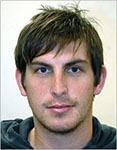
David Tassone is a PhD student at the Australian School of Petroleum. He graduated with a BSc (hons) from The University of Adelaide in 2008. His research interests include geomechanics as well as the burial history of sedimentary basins and the associated tectonic scale processes. Member: AAPG, ASEG, PESA, EAGE.david.tassone@adelaide.edu.au |
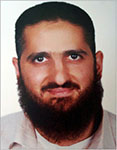
Hani Abul Khair received his BSc in Earth and environmental sciences, his MSc in sedimentology and his PhD in petroleum geosciences at the University of Jordan, Jordania. He worked as a petroleum geoscientist with Target Exploration UK before taking a postdoctoral position at the University of Jordan. In 2010, he joined the Australian School of Petroleum as a research associate, focusing on a shale gas project funded by Primary Industries and Resources SA (PIRSA). In 2011, he started working with the South Australian Centre for Geothermal Energy Resources on a project involving fracture detection in deep shale horizons. His expertise encompasses sedimentary geology, sequence stratigraphy, seismic interpretation, petrophysics, geomechanics, and basin analysis. Member: PESA (SA Committee Member) and AAPG.habulkhair@asp.adelaide.edu.au |
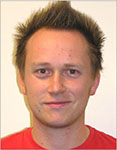
Simon Holford is an Australian Research Council post-doctoral fellow and lecturer at the Australian School of Petroleum. He is the deputy director of the Centre for Tectonics, Resources and Exploration (TRaX) at the University of Adelaide. He graduated with a BSc (hons) from Keele University (2001) and a PhD from the University of Birmingham (2006). His research interests are in the deformation, uplift and magmatic evolution of rifted margins, sedimentary basins, and continental interiors and their impact on hydrocarbon exploration. Member: AGU, ASEG, GSA, GSL, PESA. simon.holford@adelaide.edu.au |
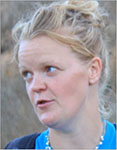
Rosalind King completed her BSc (hons) and PhD at the University of Liverpool in 2001 and 2005, respectively. Her PhD research studied the structural evolution of the Cape Fold Belt in South Africa. She worked as a post-doctoral researcher at the Australian School of Petroleum (University of Adelaide) from 2005–10, studying the present-day stresses of northwest Borneo and delta—deepwater fold-thrust belts. She is a lecturer at the School of Earth and Environmental Sciences (University of Adelaide) and her research includes the tectonics of deepwater fold-thrust belts, detachments, fold and thrust mechanics, and petroleum geomechanics. She serves as the president of the South Australian Branch of PESA. Member: GSL, AAPG, PESA. rosalind.king@adelaide.edu.au |


